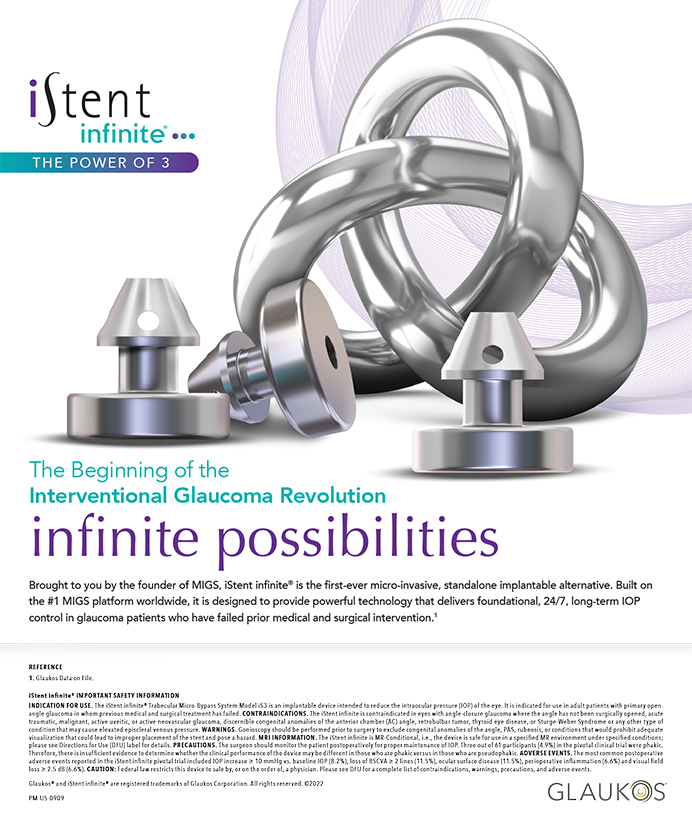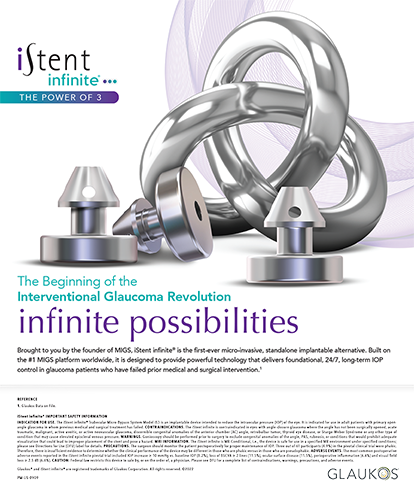
Most ophthalmologists have offerings outside of the traditional fee-for-service paradigm. These include refractive surgery, refractive cataract surgery, aesthetics, optical and contact lens sales, and products and procedures for dry eye disease (DED). Speaking to our patients about paying for services or products can make us uncomfortable initially. As physicians, we have been trained to work within and valuate ourselves based on a fee-for-service relationship. Stepping beyond this boundary can feel like betraying our oath to patient care. The services offered, however, can provide important health benefits to our patients.
With practice, patient education, and staff support, anyone can develop a confident and comfortable way of presenting cash-pay options to patients. The process can become an acceptable and integral model within a practice.
STEP NO. 1: BUILD TRUST, SET REALISTIC EXPECTATIONS, AND ACKNOWLEDGE THE VALUE PROVIDED
Our patients look to us for advice and recommendations. Whether we are offering a covered or noncovered service, how we communicate our recommendations should align with the doctor-patient relationship. If we believe that the plan is in the best interest of the patient and addresses their needs, then confidently conveying that information is essential. Patients want to feel that we appreciate their medical, financial, social, and familial issues and constraints.
I am a big fan of questionnaires. They provide information on the patient’s concerns, needs, and expectations. They also sometimes reveal to patients issues they weren’t aware of or provide an avenue of communication about a problem that was otherwise uncomfortable for them to discuss.
Refractive cataract surgery. Questionnaires have long been used to identify which cataract surgery patients are interested in partial or complete spectacle independence and highlight personality traits that influence our recommendations. I don’t apologize for asking patients to pay extra for options that increase their postoperative spectacle independence. The time and hard work required to ensure excellent outcomes and patient satisfaction are worth the additional fees. I find that patients appreciate the value of the skills and technology required and that they are willing to pay for the benefits.
DED management. Dry eye questionnaires are used to identify patients who have DED risk factors and symptoms. A well-crafted questionnaire can indicate the true impact of DED on a patient’s life and their level of motivation to treat the disease. Some patients are so desperate for relief that they come to the office asking for products and procedures they have read about and researched. Others believe from television commercials that DED can be cured with tetryzoline (Visine, Johnson & Johnson Vision) and struggle to understand that this complex, chronic, progressive disease often requires multiple therapeutic approaches and long-term treatment.
Explaining DED in terms patients can understand improves their compliance and willingness to pay out of pocket for certain therapies. I impress on patients the risks of ignoring or undertreating ocular surface disease. I discuss the long-term implications for their meibomian glands, ocular surface, and visual potential if the disease is not adequately and appropriately treated. Explaining how a proposed treatment affects the various layers of the tear film or ocular surface can help them understand why I am making a recommendation and what they can expect. Understanding their disease allows them to partner with me in their care.
The hardest conversations are the ones I have with patients who have signs but few if any symptoms of DED. I remind them that many diseases are asymptomatic, and I cite examples such as hypertension and high cholesterol. I note that holistic lifestyle changes can be helpful but that long-term medical therapy is frequently required. Patients often ask me why a medication or procedure is not covered by insurance and, in this situation, if it is truly necessary or beneficial. I explain that insurance coverage is complicated and driven by multiple factors, including whether FDA approval is required and whether a company has filed for a reimbursement code.
Aesthetics. I used to believe that, as a group, aesthetic patients were highly demanding and willing to pay out of pocket for treatment, but this isn’t universally true. Some patients come to the office to have a particular problem addressed. Others seek a treatment that will help them look and feel better. The latter group isn’t sure what they need and is looking for good advice and a comprehensive plan.
Questionnaires that ask the following can be useful:
- What is your motivation to seek treatment now?
- What currently bothers you the most?
- Which procedures have you had done, and what did you like or dislike about the results?
- Are you trying to look better generally or for a specific event?
Most patients who present for a consultation have done some homework about the procedures I perform and have viewed my before-and-after photographs online. My practice offers free consultations that allow patients to receive a comprehensive evaluation without a financial obligation. Answering the questionnaire gets patients thinking about their own relevant issues, and I can request more information when we meet. I hand patients a mirror and ask, “What brought you in, and what bothers you the most?”
Based on their answers to the questionnaire and my verbal questions, I discuss with patients what I see, if I think their goals are realistic, and the approach I recommend. This is also when I point out if I think another option could improve their look or outcome. I find that patients appreciate candor. They want to know that I understand their concerns and expectations and respect their financial situation.
STEP NO. 2: ESTABLISH STAFF SUPPORT AND BUY-IN
The first point of contact patients have with your practice is often a staff member. Staff education, buy-in, and personal experience with the products and services we offer are therefore essential.
I compiled a list of frequently asked questions and ensure that my staff knows the answers. They are happy to discuss their experiences with patients, and their before-and-after photographs can be viewed on computer monitors throughout the office (Figure 1). I find that these images are real conversation starters.

Figure 1. Examples of staff members’ before-and-after photographs are displayed on computer monitors throughout Dr. Feulner’s practice.
My staff can answer general questions about our practice’s aesthetic offerings. They also convey to patients that it is I, the provider, who will advise them. In this way, the staff can alert me to patients who are interested in aesthetic services and facilitate a conversation about a noncovered treatment.
STEP NO. 3: DEVELOP AN EFFECTIVE MARKETING PLAN
A patient’s decision to pay for an elective procedure can be more emotional than practical. People are often willing to spend money when the outcome aligns with their goals, needs, and desires and the perceived value outweighs the cost.
My practice relies heavily on word of mouth, social media, and organic marketing to drive patient interest. It is surprising how many patients inquire about services and products we provide because they saw a display, banner, or sign in the office (Figure 2). We have videos available on almost every subject, and the staff often plays them for patients while they are waiting to see me.

Figure 2. Examples of the signs, banners, and displays promoting the services and products provided by Dr. Feulner’s practice.
The use of videos, photographs, meibography, topography, Placido ring images, and vision simulators can facilitate patient education and reinforce therapeutic messaging after treatment. Patients like to see improvement, especially when an out-of-pocket expense is associated with it.
CONCLUSION
Providers should not lose sight of the fact that the noncovered products and procedures we offer benefit the health and quality of life of our patients. We must believe in the value of what we offer and be sensitive to patients’ motivations and financial constraints.




